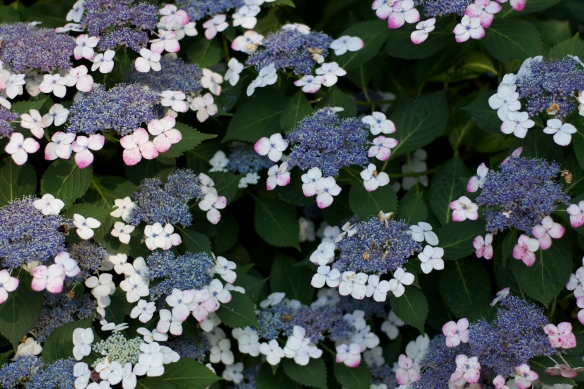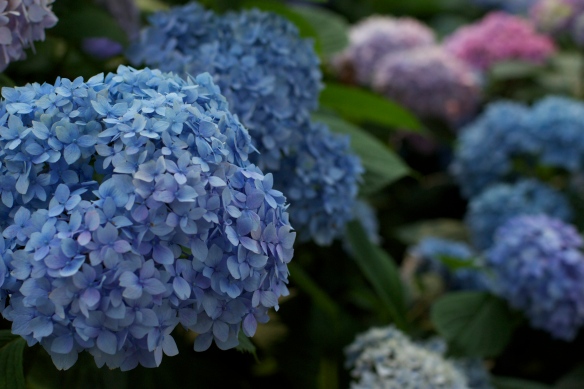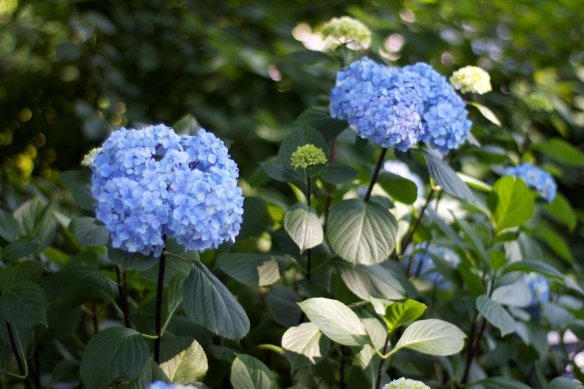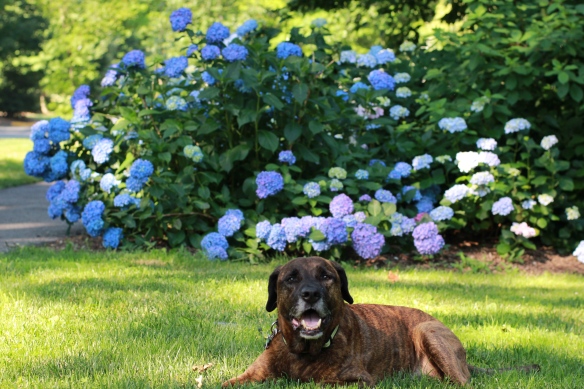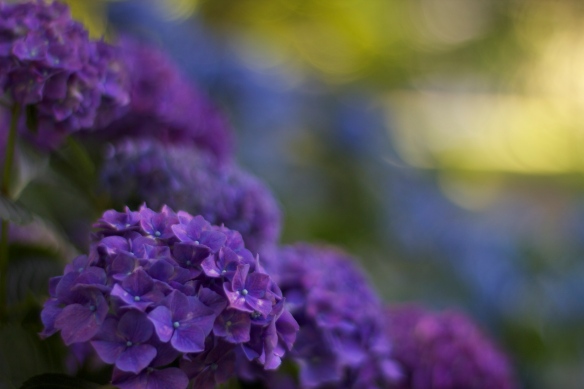Back in February, my parents said they’d let me turn a patch of earth at their house into a garden of my own(ish). Turns out they weren’t kidding after all, and made good on the promise. At the end of February, I did some soil excavation to test the tilth and drainage of the area.
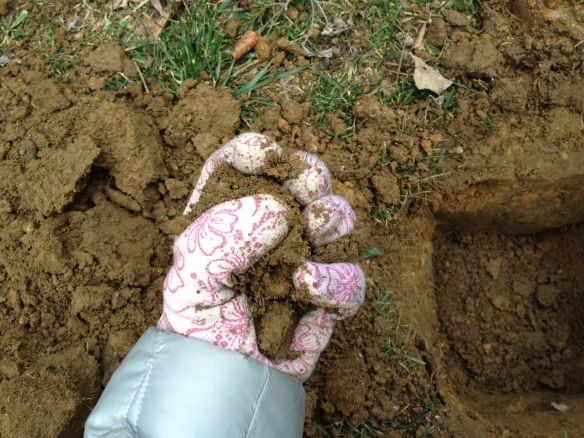
holding the ball of soil, then seeing how easily it breaks apart - it stayed in the ball so it's pretty much clay (feb 21st)
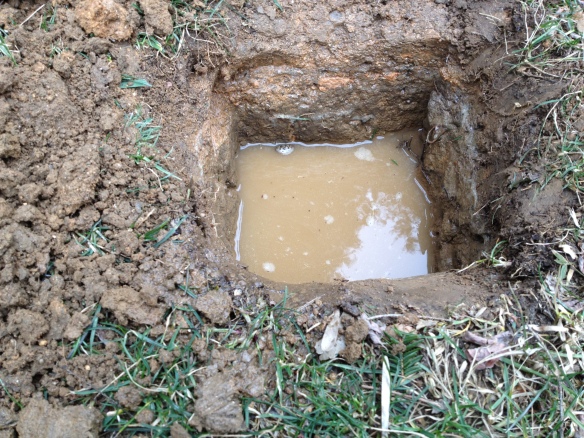
i dug a foot-deep hole and poured water in twice to see how it would drain - good news, it drained right away both times! (feb 21st)
Satisfied enough to try this garden experiment, I roped off two 4′ x 13′ beds in a mostly full sun spot by the garage with all the best intentions.
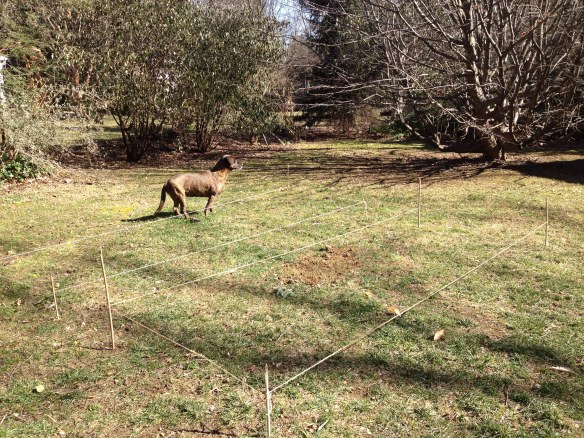
Larry the dog sniffs out the projected garden site (feb 26th)
My dad and I started the sod removal/soil amendment at the end of February, deciding just to see what the work was like between the two of us for one bed. One bed at a time. I have a bad back, and he’s 72. (That’s never stopped us from doing stupid things, though.)
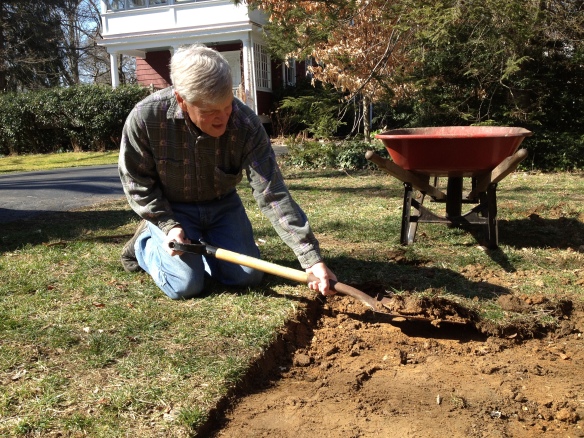
My dad, the ex-Marine, is going along with this folly and helping me remove sod (feb 27th)

a nice crisp edge is how we like it (feb 27th)

dad the incredible hulk does the bulk of the work, we have to remove quite a bit of crap soil to make way for the good stuff (feb 27th)
While I’m not looking, Dad (and Larry) double-dig much of the bed, despite my wishes to wait to do that until we had the soil amendment materials. There is no stopping him! He is a machine! We get into a heated discussion that’s not really about the garden at all, but more about my current life situation (I call it a ‘pickle’) and the fact that I can’t do this all myself because of my back. He lets me yell at him for a while until I realize I am not treating my only laborer with the kindness he deserves. Many apologies and a few tears later…we both agree that gardening brings out the best in me!
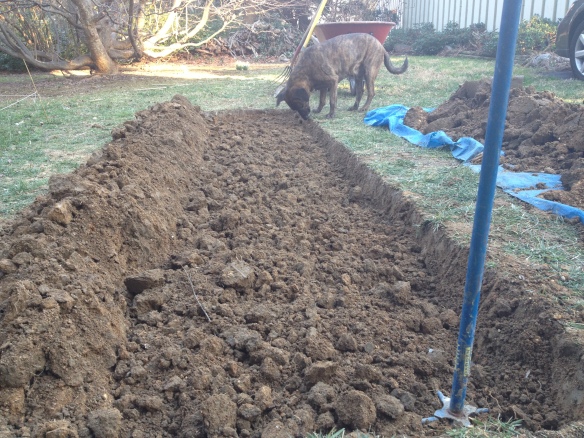
double digging and lots of sniffing (feb 27th)
Ok, now we got the goods: Bumper Crop, the new and improved organic soil builder we purchased from Mostardi’s Nursery. It contains Sphagnum Peat Moss, Peat Humus, Worm Castings, Kelp Meal, Dolomitic Lime, Composted cow manure, Lobster and Crab Shells (wait, I’m getting hungry) Aged Bark, dehydrated Poultry manure, and both endo and ectomycorrhizae. This soil needs all the help it can get!
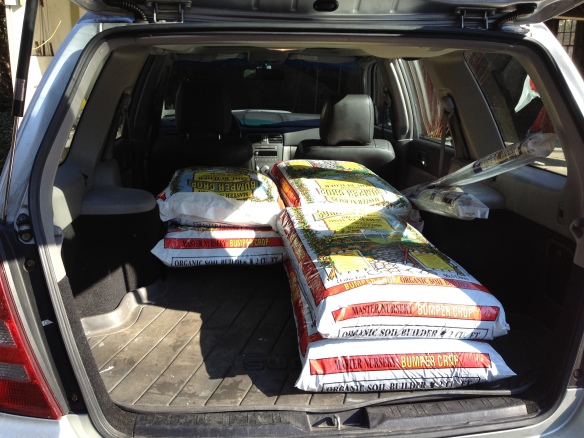
subarus rock for garden jobs! (feb 28th)
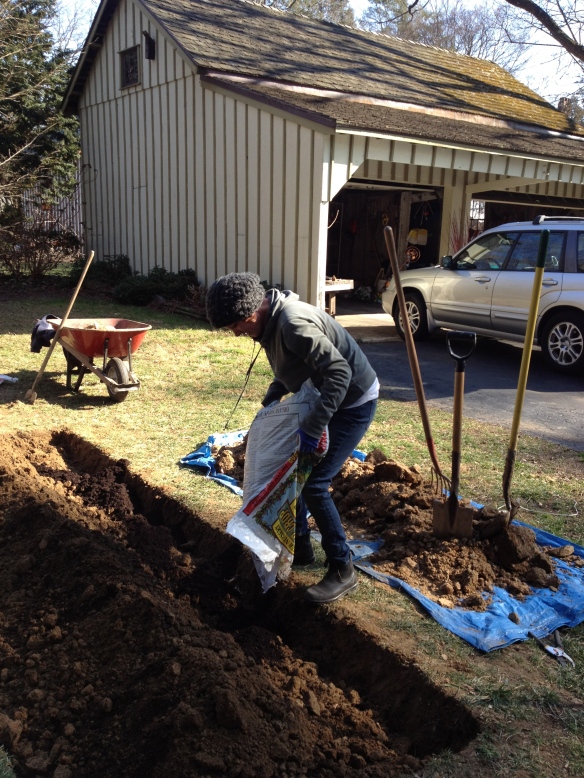
i can't thrash like i used to. adding bumper crop soil amendment (feb 28th)
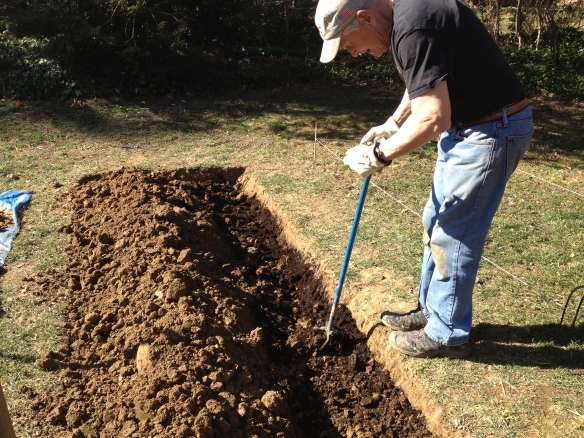
Capt Mac works in the luscious good stuff with the garden weasel and later i help a little with a pitchfork (feb 28th)
We let the bed sit, and carefully watch as rains come, sun shines, and bunnies hop. All looks good. I go back to Boston to see my husband. I come back. Then the temps warm up. I decide that in my current situation (living a few different places) it might be best not to have two garden beds to maintain, so it will be one for now. I also decide to get the ball rolling and add some more of the black stuff since we aren’t using it for the other bed. And do some fine raking to break up some remaining clumps. There is a voice in my head saying, “Be careful Ann, this is one of the ways you threw your back out once.” Again, it doesn’t stop me (but now I do my back stretches almost every day to counter the gardening etc.)
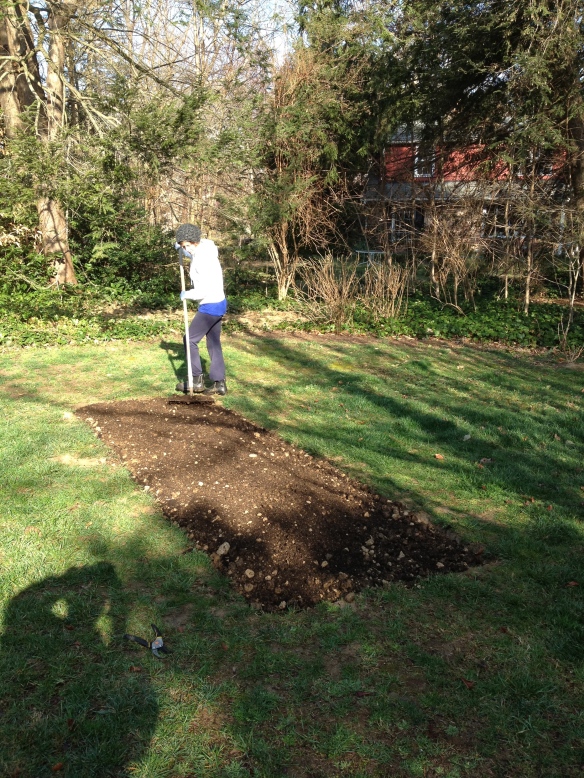
raking out clumps, added another bumper crop bag (mar 19th)
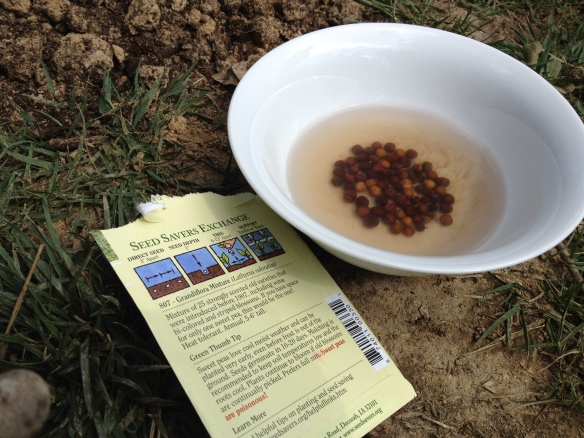
i read in my Flower Farmer book it's good to soak sweet peas for 24 hours before planting. they got all swelled up and look ready to burst here. (mar 20th)
And then it’s TIME TO SOW! Here’s everything I planted today…Sweet Peas (Grandiflora mixture,) Hungarian Blue Poppy (Papaver somniferum,) Blue Boy Bachelor’s Button (Centaurea cyanus), White Lace Bishop’s Flower (Ammi majus) and Grandma Einck’s Dill.
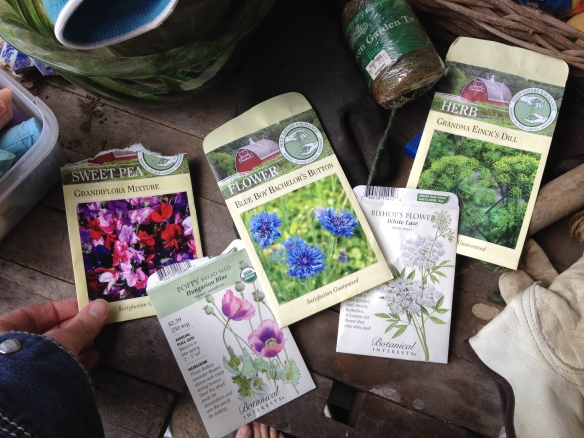
first round of sowing (mar 20th)
Julie and I also bought some more stuff at Mostardi’s – I found some Euphorbia x martinii ‘Ascot Rainbow’ which I really dig for the foliage, although it is blooming now. It will get 2-3′ tall and spread a bit.
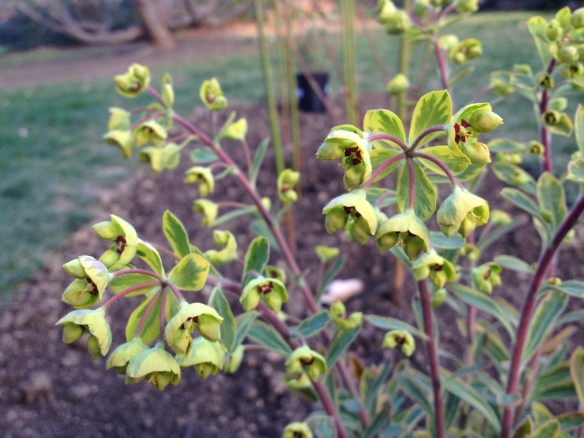
Euphorbia x martinii 'Ascot Rainbow' (mar 20th)
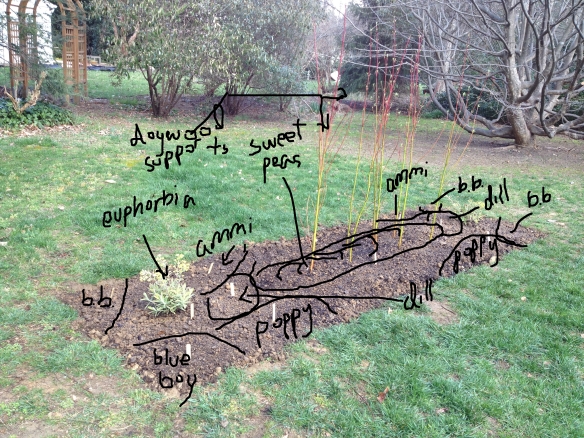
garden diagram gone haywire, at least i can read it (mar 20th)

after first round of sowing/planting (mar 20th)
The red-stemmed dogwood will hopefully support the sweet peas, and also looks neat while there’s nothing happening. Heck, maybe it will actually root! (Doubtful.) The plan is to see what germinates and perhaps add a few other things like sunflowers, zinnias or stuff I see in nurseries I like. (Not doing the cukes this year because I think my huzz and I should do that project together.) All watered and ready to grow…so think good thoughts for the little garden that could. And happy first day of Spring!
39.908889
-75.349583
